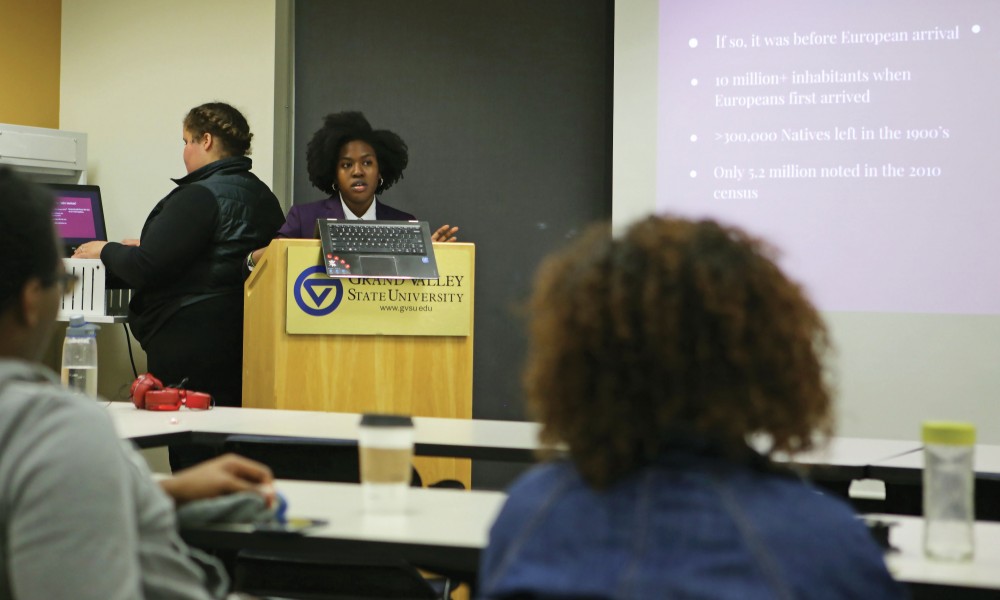Confronting racism

GVL / Emily Frye Cheyanna Green-Molett presents during Grand Valley State University’s NAACP group on Monday Feb. 27, 2017.
Mar 2, 2017
When the Civil Rights Act of 1964 was signed, ending racial segregation in public places and specific forms of employment discrimination, it might have seemed as though racial barriers were no longer going to be an issue. Nevertheless, questions about racial discrimination continue to persist today.
To discuss racism and privilege in modern society, the Grand Valley State University chapter of the National Association for the Advancement of Colored People (NAACP) held the first installment of its “Resistance” series Monday, Feb. 27, in the Kirkhof Center.
Cheyanna Green-Molett, the president of GVSU’s NAACP chapter, led the first part of the resistance series, titled “Superiority Complex: Dismantling the ‘Great Again’ Ideology,” and focused on systematic racism.
Systematic racism—also known as institutional racism—is a form of racism practiced in social and political institutions and reflects disparities, which include health care, criminal justice, housing and other societal factors.
“All of the systems that we have today are created to control in some way or form,” Green-Molett said. “So, when we say systematic racism, it’s a system that has been set up specifically against people, and that’s where the racism comes from.”
Green-Molett stressed that the purpose of the series and the event was to go beyond having a protest and instead to highlight how systematic racism is embedded within American society.
“This event is really a discussion and awareness stance where we can point out the issues, point out the denial, point out the alternative facts,” Green-Molett said.
At the beginning of the presentation, Green-Molett emphasized how the idea of race was first introduced as scientific racism/racial biology in order to justify the treatment of enslaved individuals.
The presentation also accentuated how dehumanization—a technique used to convince others that certain groups of people are subhuman—and denial are tactics used by the privileged to create disparity within American society.
“I think that I kind of realize the ways in which the Jim Crow laws really dehumanizes black people,” said Dejuan Howland, a GVSU student, during the discussion portion of the event. “I felt the depth of the details, like the human rights being taken away and essentially saying that we weren’t human anymore.”
Beyond the exhibition of graphs and data and images of police brutality, cultural appropriation, white privilege and other instances of systematic racism in the U.S., the presentation also included videos—some of which were graphic—of victims and proponents of systematic racism.
The most graphic videos at the event included Eric Garner’s fatal arrest and several videos of the brutal lynching and the disfiguration of Emmett Till in the summer of 1955.
In addition to recognizing and resisting systematic racism, accepting and appreciating the differences of others was a central theme of the event, as well as being an ally and recognizing issues and privilege within one’s society.
“I would say I feel completely comfortable talking about this stuff, but nobody else does,” said Quinn Gardner, another audience member at the event. “I really don’t know how to break this barrier, but it really starts at the conversation.”
Details for the second part of the resistance series will be announced at a later date.
For more information about the NAACP, visit https://orgsync.com/65059/chapter or http://www.naacp.org/.

























